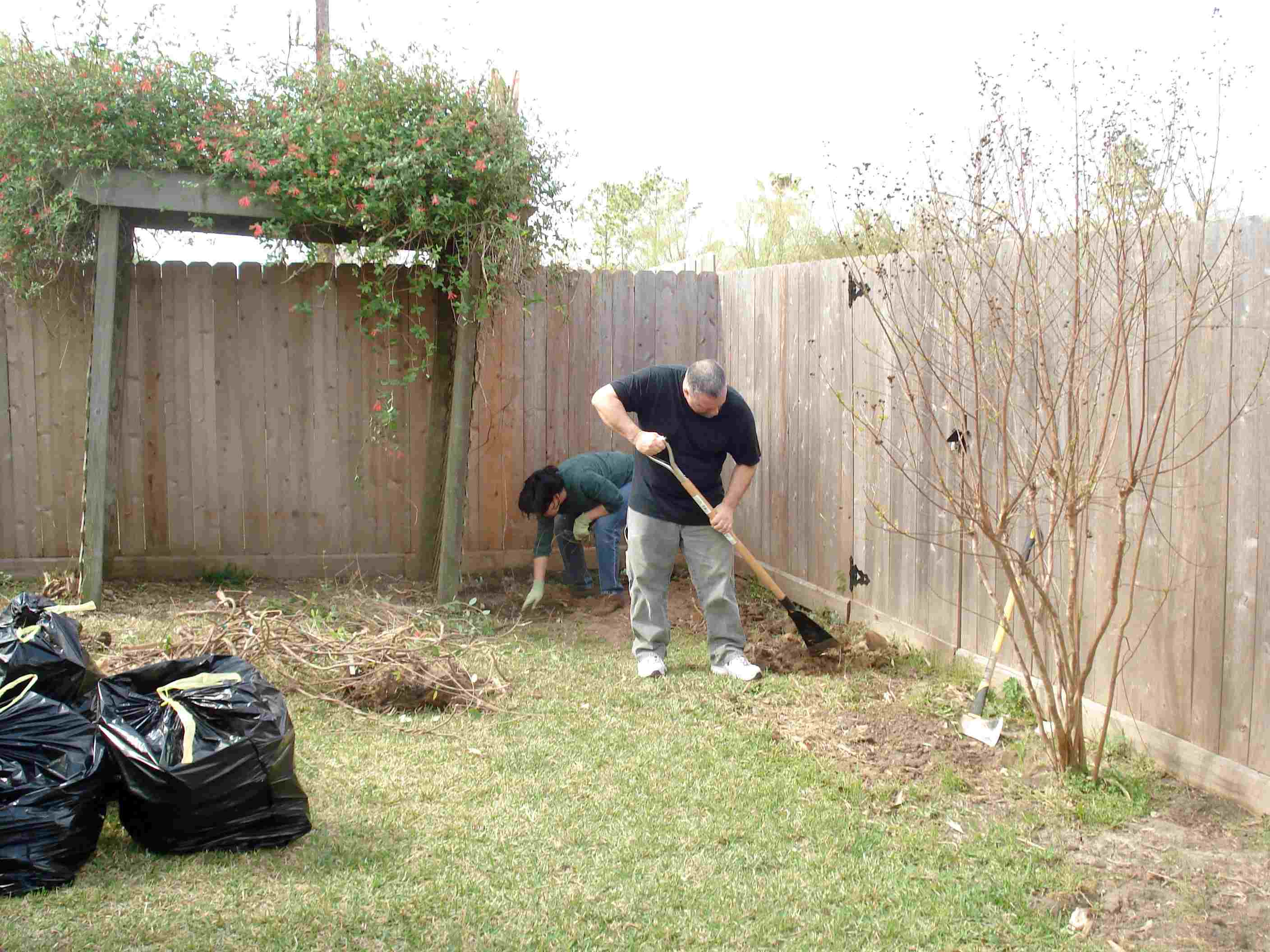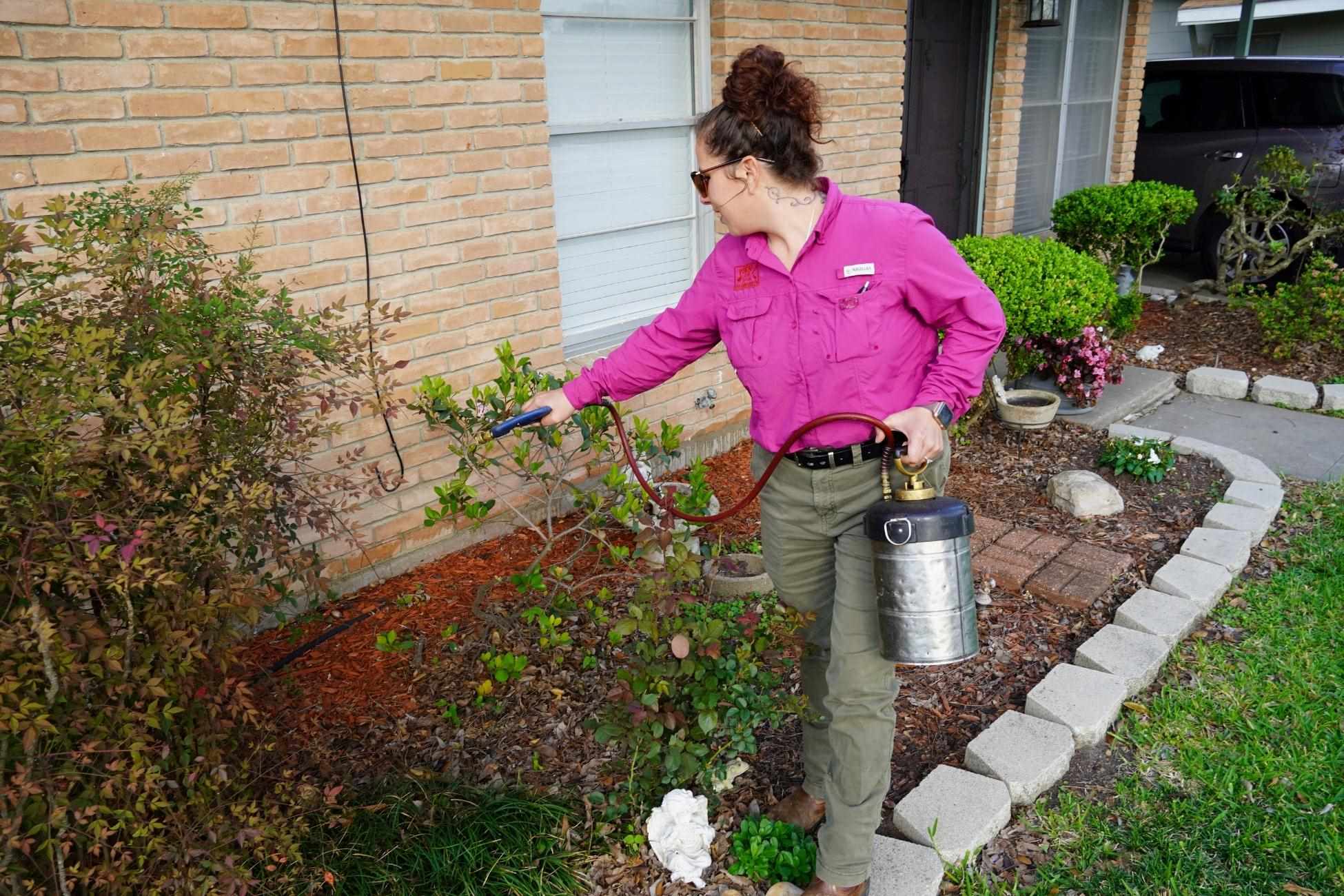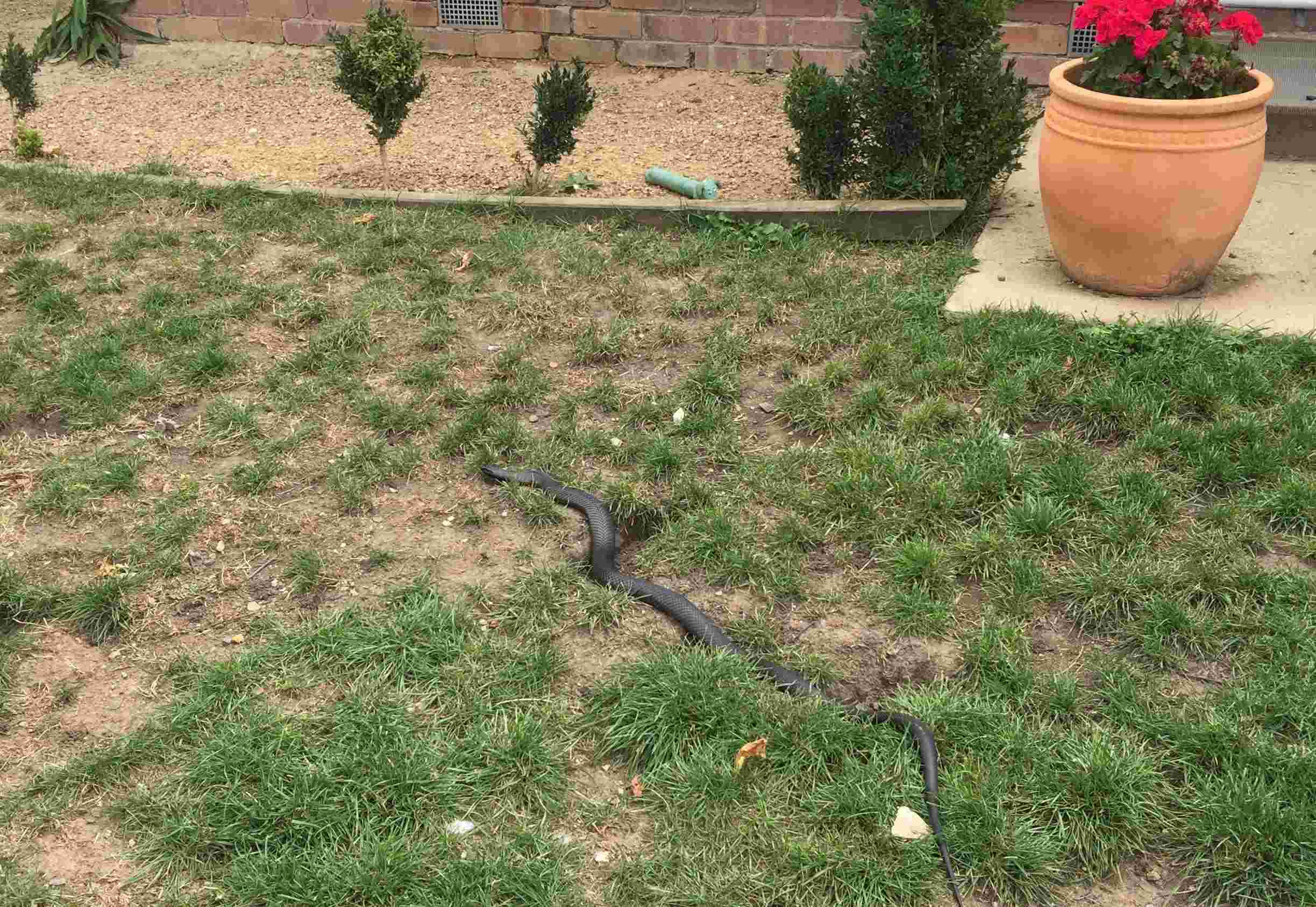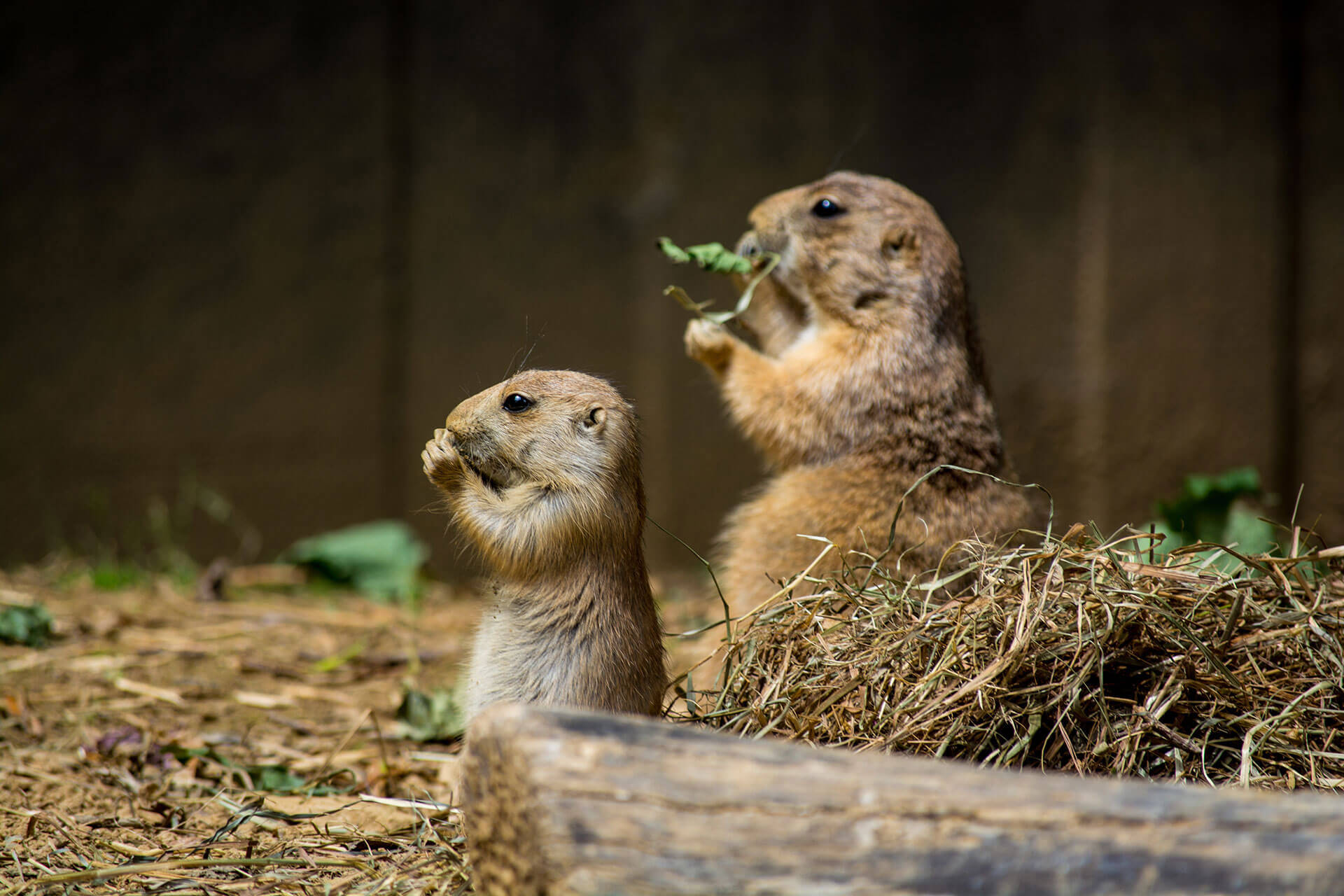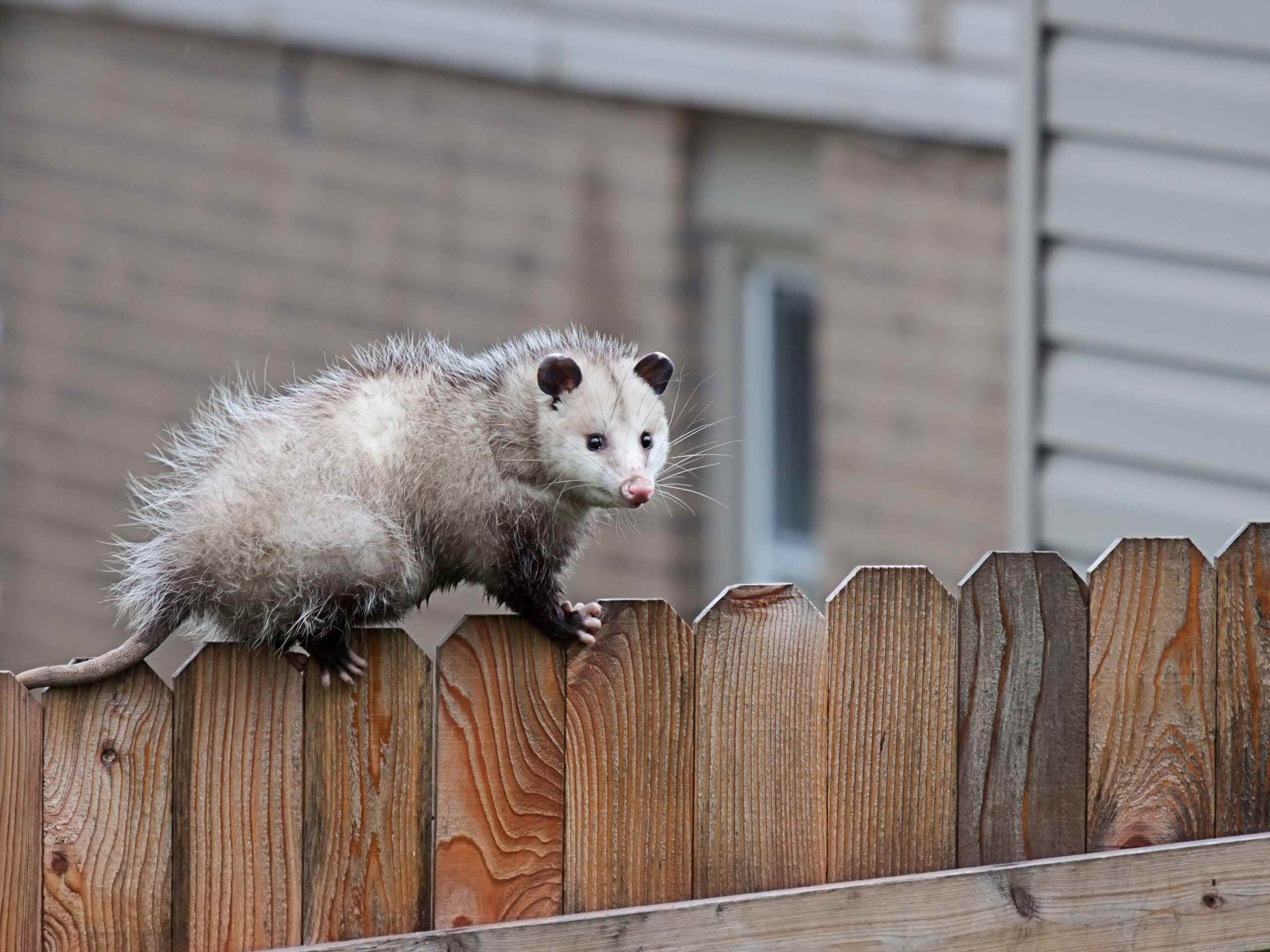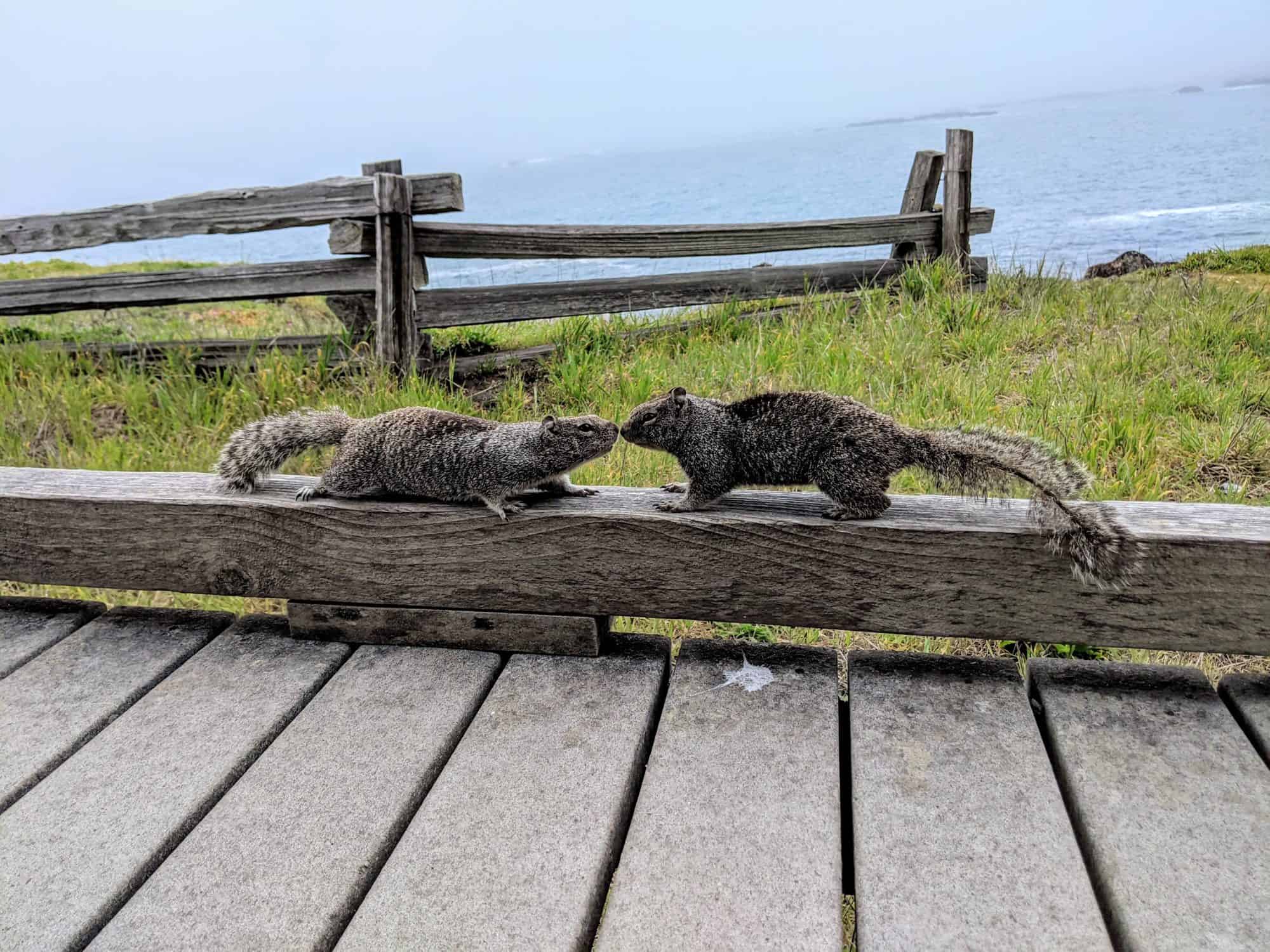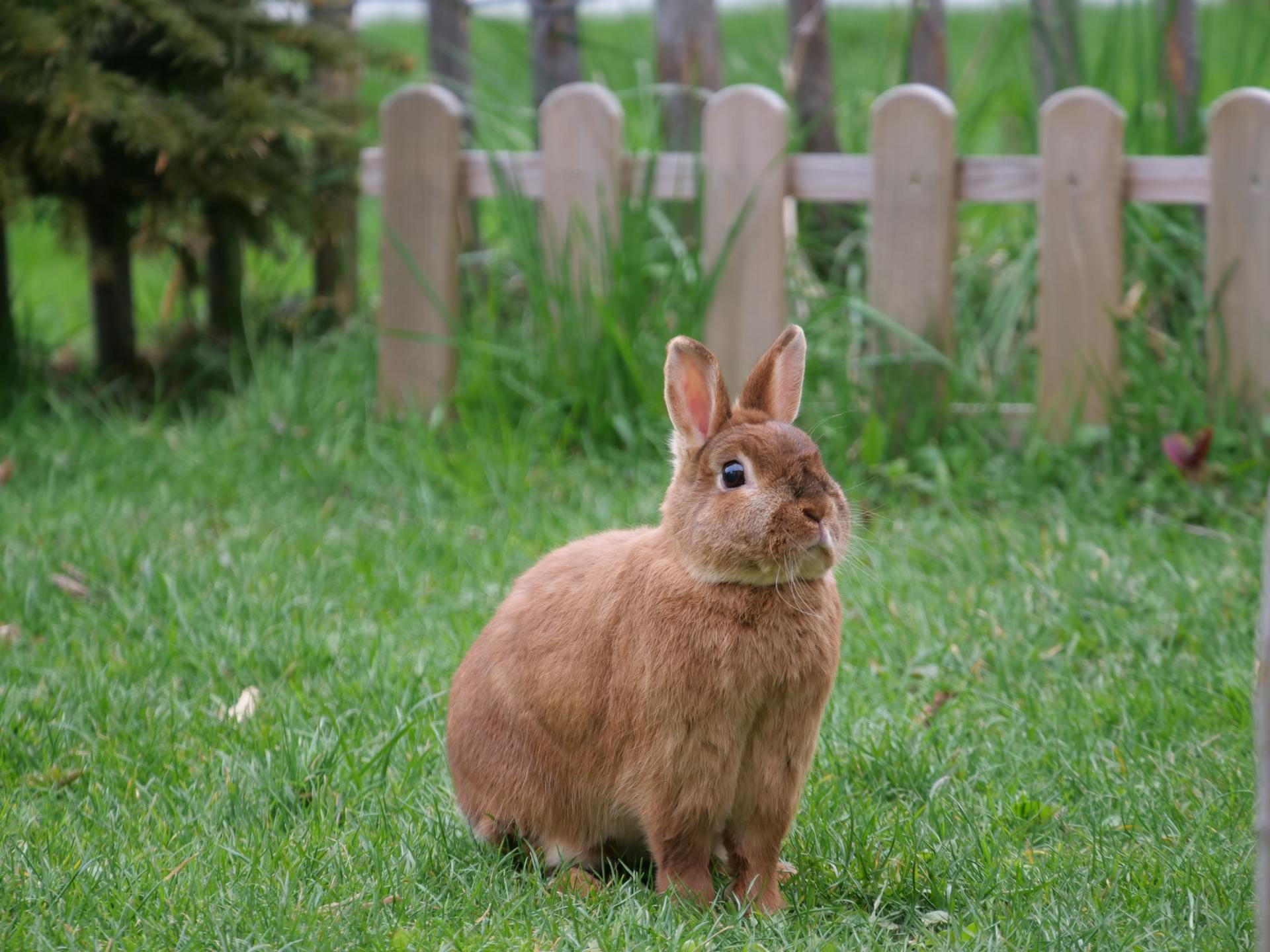Home>Gardening Tips and Tricks>How To Get Rid Of Hawks In Backyard
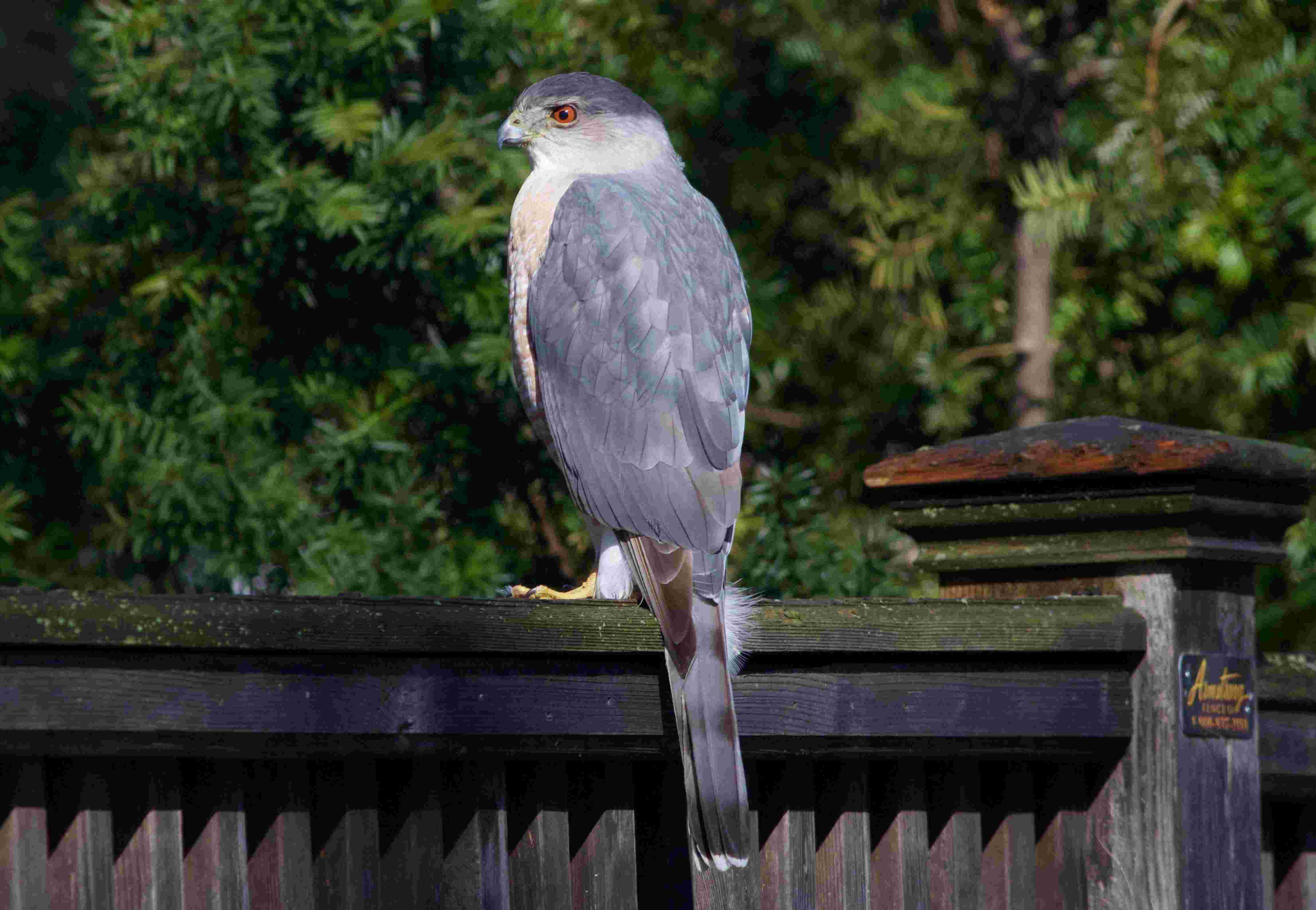

Gardening Tips and Tricks
How To Get Rid Of Hawks In Backyard
Modified: January 22, 2024
Learn effective techniques for problem solving and getting rid of hawks in your backyard with our comprehensive guide. Create a safe environment for your property.
(Many of the links in this article redirect to a specific reviewed product. Your purchase of these products through affiliate links helps to generate commission for Chicagolandgardening.com, at no extra cost. Learn more)
Table of Contents
Introduction
Welcome to our guide on how to get rid of hawks in your backyard. Hawks are majestic birds of prey that play an essential role in maintaining balance in ecosystems. However, their presence in residential areas can sometimes lead to conflicts with humans. Hawks may prey on small pets, cause damage to gardens, or create a sense of fear and unease for homeowners.
Before taking any measures to deter hawks, it’s important to consider the legal implications as some hawks are protected by wildlife conservation laws. Therefore, it’s crucial to understand your rights and obligations when dealing with these birds.
In this article, we will outline various non-lethal methods you can utilize to resolve the issue of hawks in your backyard. From creating a natural barrier to installing visual deterrents, we’ll provide you with practical solutions to discourage hawks from entering your property. We’ll also discuss the benefits of encouraging natural predators and when it might be necessary to seek professional help.
By implementing these strategies, we hope to guide you in finding an effective and humane way to coexist with hawks while ensuring the safety and harmony of your backyard.
Understanding Hawks in Backyards
Hawks, members of the Accipitridae family, are birds of prey known for their keen eyesight, powerful beaks, and sharp talons. These raptors play a vital role in controlling populations of rodents, snakes, and other small animals. While hawks primarily inhabit forests, grasslands, and open areas, they can also be found in residential areas, including backyards.
It’s important to understand that hawks are protected by various conservation laws in many countries due to their importance in maintaining biodiversity and ecosystem balance. Different species of hawks, such as Red-tailed Hawks, Cooper’s Hawks, and Sharp-shinned Hawks, may visit backyard areas in search of food, nesting sites, or suitable perching spots.
When hawks venture into backyards, they often have specific motivations. They may be attracted by small mammals, birds, or even backyard chickens. However, it’s crucial to determine the underlying cause of their presence and assess the level of threat they pose.
While it’s natural for homeowners to have concerns about hawks potentially attacking their pets or damaging their property, it’s important to note that such incidents are relatively rare. Hawks generally prefer to prey on smaller animals in their natural habitats rather than risk confrontation in residential areas.
Overall, understanding the behavior and purpose of hawks in backyards is essential before taking any steps to deter them. By doing so, you can develop a more informed approach to addressing the issue without causing harm to these magnificent creatures or violating any legal restrictions.
Assessing the Problem
Before implementing any deterrence strategies, it’s crucial to thoroughly assess the problem of hawks in your backyard. This assessment will help you determine the severity of the situation and identify the areas or factors that might be attracting the hawks.
Start by observing the habits and patterns of the hawks. Take note of their frequency of visits, the areas they frequent the most, and their preferred prey. This information will be valuable in devising an effective plan to deter them.
Next, evaluate your backyard for potential attractants. If you have small mammals, such as rabbits or mice, that could be attracting the hawks, consider implementing measures to minimize their presence. Secure feeders and trash cans to prevent easy access to food sources that may attract the hawks.
If you have an abundance of bird feeders or bird baths, these may act as a magnet for hawks. Consider temporarily removing or relocating these enticing features while you work on deterring the hawks.
Assess the layout of your backyard and look for potential perching or nesting spots that may be attracting the hawks. Trim back overgrown trees or shrubs that could provide convenient roosting areas.
Also, consider the specific concerns you have regarding the hawks. Are you worried about the safety of your pets or livestock? Are they causing damage to your property or gardening efforts? Understanding these concerns will help you prioritize the most effective methods of deterrence.
By carefully assessing the problem, you’ll have a better understanding of the habits and motivations of the hawks and be well-equipped to implement the most appropriate and effective deterrence measures.
Legal Considerations
When dealing with hawks in your backyard, it’s essential to be aware of the legal considerations surrounding these protected birds. Hawks, along with other birds of prey, are safeguarded by wildlife conservation laws in many countries, making it illegal to harm or kill them without proper permits or licenses.
Consult your local wildlife conservation agency or department to familiarize yourself with the specific regulations and permits required in your area. These regulations may vary depending on the species of hawk and your location.
In some cases, hawks may be protected by federal laws, such as the Migratory Bird Treaty Act or the Endangered Species Act. Violations of these laws can result in significant fines and penalties, so it’s crucial to understand your legal obligations and act accordingly.
When faced with a nuisance hawk situation, it’s important to remember that non-lethal methods of deterrence are typically permissible under the law. These methods focus on discouraging hawks from visiting your property without causing harm to the birds themselves.
However, if you encounter a persistent issue that poses a significant threat to human safety or property, it’s advisable to consult with wildlife professionals or local authorities for guidance. They can provide guidance on the appropriate steps to take while ensuring compliance with the law.
By understanding and respecting the legal considerations surrounding hawks, you can navigate the situation responsibly and ethically, promoting a harmonious coexistence between humans and these protected avian species.
Non-Lethal Methods to Deter Hawks
If you’re experiencing issues with hawks in your backyard, there are several non-lethal methods you can employ to deter these birds without causing them harm. By implementing these strategies, you can create an environment that hawks find less appealing and encourage them to seek alternative habitats.
1. Creating a Natural Barrier: Planting dense vegetation, such as tall shrubs or trees, around your property can act as a natural deterrent. Hawks prefer open spaces for hunting, so creating visual barriers can make your backyard less attractive to them.
2. Installing Visual Deterrents: Hawks are wary of unfamiliar objects. Hanging reflective tape, shiny CDs, or scarecrow-like effigies in the garden can startle and discourage them from approaching.
3. Noise-based Deterrents: Hawks are sensitive to loud noises. Utilize devices such as wind chimes, bells, or motion-activated noisemakers to create unexpected sounds that the hawks will find off-putting.
4. Using Physical Barriers: Installing netting or wire mesh over vulnerable areas, such as chicken coops or ponds, can prevent hawks from accessing their potential prey. Ensure the structures are secure and properly installed to be effective.
5. Encouraging Natural Predators: Hawks have their own predators, such as larger raptors or even domesticated animals like dogs. Encouraging the presence of these natural predators in your area can help deter hawks from visiting your backyard.
6. Modifying the Environment: Hawks may be drawn to areas with ample food sources. By making your property less attractive to their prey, you can indirectly discourage hawks from frequenting your backyard. Minimize bird feeders, secure livestock feed, and remove potential food sources.
7. Educating the Neighbors: Cooperating with your neighbors to implement these methods can create a united front against hawks. Encourage them to follow the same deterrent strategies to promote a hawk-free environment in the entire neighborhood.
Remember, consistency is key when it comes to deterring hawks. It may take time for them to associate your backyard with negative experiences and move on to more suitable hunting grounds. By using non-lethal methods, you can effectively resolve hawk-related issues while safeguarding these magnificent birds.
Creating a Natural Barrier
One effective method to deter hawks from your backyard is by creating a natural barrier. By strategically planting dense vegetation, you can make your property less inviting to hawks and discourage them from frequenting the area.
The key is to choose plants that provide visual obstruction and cover, making it difficult for hawks to spot potential prey or navigate through the foliage. Opt for tall shrubs, thick hedges, or densely branched trees to create a barrier that is both aesthetically pleasing and functional.
When selecting plant species, consider those native to your region that thrive in your particular climate. Native plants not only have a better chance of surviving and flourishing but also attract a variety of wildlife that may divert hawks’ attention from your backyard.
Position the vegetation strategically to create a buffer zone between the open areas of your yard and potential hawk hunting grounds. Place the plants along fences, property edges, or around areas with vulnerable prey such as bird feeders or chicken coops.
In addition to obstructing the hawks’ line of sight, a natural barrier can also provide protection for smaller birds and potential prey. The dense vegetation serves as a sanctuary where they can seek refuge from hawks and other predators.
Regular maintenance of the natural barrier is essential to keep it effective. Pruning and trimming the plants will help maintain their density and prevent overgrowth that may create points of access for hawks.
It’s important to note that creating a natural barrier may not offer immediate results, as hawks may still scout the area for some time before realizing the changes in their hunting prospects. Consistency and patience are key. By combining a natural barrier with other deterrent methods, you increase your chances of successfully discouraging hawks from your backyard.
Remember to consider the long-term impact of the natural barrier as well. It can provide valuable habitat for other wildlife, support biodiversity, and enhance the overall ecological balance in your backyard.
Installing Visual Deterrents
Visual deterrents can be an effective way to deter hawks from your backyard. By introducing unfamiliar and potentially threatening objects, you can create a sense of danger and encourage hawks to seek out safer areas away from your property.
One simple and cost-effective method is the use of reflective tape or shiny objects. Hanging strips of reflective tape or attaching CDs or aluminum foil to trees or posts can create flashes of light that startle hawks. The movement and different angles of reflection can confuse and deter them from approaching your backyard.
Another visual deterrent is the use of scarecrow-like effigies. You can create or purchase owl or hawk decoys and position them in strategic locations within your property. These decoys mimic natural predators and can intimidate hawks, deterring them from getting too close.
Make sure to move the decoys regularly to maintain their effectiveness. Hawks may become accustomed to stationary objects, so changing their position and orientation can help preserve their deterrent effect.
For added effectiveness, consider employing other visual scare tactics, such as large inflatable balloons with predator eyes or predator kite-shaped devices that simulate a hovering raptor. These visual cues can create a sense of perceived danger for hawks.
It’s important to note that visual deterrents may have varying degrees of success, as hawks can quickly become habituated to them. Regularly rotating and changing the placement of these visual deterrents can increase their effectiveness and prevent hawks from becoming accustomed to their presence.
Keep in mind that visual deterrents are most effective when combined with other non-lethal methods. Utilizing a combination of strategies, such as installing visual deterrents along with creating a natural barrier or implementing noise-based devices, can provide a comprehensive approach to deter hawks from your backyard.
Remember to comply with any local regulations regarding the use of visual deterrents and avoid placing them in a way that may inconvenience or pose harm to neighboring properties or wildlife.
By installing visual deterrents, you can introduce elements that disrupt the hawks’ comfort and discourage them from establishing a presence in your backyard, helping create a more harmonious environment for both humans and wildlife.
Noise-based Deterrents
Noise-based deterrents can be an effective method to deter hawks from your backyard. These deterrents utilize unexpected sounds and loud noises that disrupt the hawks’ comfort and make them feel unwelcome. By creating an unsettling environment, you can encourage hawks to seek safer hunting grounds away from your property.
One option for noise-based deterrence is the use of wind chimes or bells. Hang these items in strategic locations around your backyard, such as near bird feeders or areas where hawks tend to gather. The clinking or chiming sounds produced by the wind will startle and deter the hawks.
Motion-activated noisemakers are another effective method to deter hawks. These devices emit sudden and unexpected sounds when they detect movement in the vicinity. You can place them in areas where hawks are known to frequent, such as near chicken coops or garden beds.
Ultrasonic devices emit high-frequency sounds that are inaudible to humans but uncomfortable for hawks. These devices can be placed strategically to create an unpleasant auditory experience for the hawks without causing harm to other wildlife or pets.
Additionally, broadcasting distress calls of birds or prey using speakers or audio recordings can create a sense of danger for the hawks. These calls signal the presence of a potential threat, discouraging hawks from approaching your backyard.
It’s important to vary the timing and location of noise-based deterrents to prevent hawks from becoming accustomed to the sounds. Changing the patterns and intervals at which the noises are emitted will help maintain their effectiveness over time.
However, it’s crucial to respect noise pollution regulations and be considerate of your neighbors. Ensure that the noise-based deterrents are not excessively loud or disruptive beyond your property boundaries.
Combining noise-based deterrents with other methods, such as creating a natural barrier or installing visual deterrents, can provide a comprehensive and multi-faceted approach to deter hawks from your backyard.
Remember to regularly assess the effectiveness of noise-based deterrents and adjust them as necessary. By utilizing these noise-based strategies, you can create an environment that hawks find uncomfortable and discourage them from establishing a presence in your backyard.
Using Physical Barriers
Using physical barriers is another effective method to deter hawks from accessing specific areas of your backyard. These barriers create a physical obstruction that prevents hawks from reaching their potential prey or nesting sites, ultimately dissuading them from frequenting your property.
One common type of physical barrier is the installation of netting or wire mesh. This method is particularly useful for protecting vulnerable areas such as chicken coops, ponds, or garden beds. By covering these areas with the appropriate mesh, you can effectively block hawks from accessing their potential targets.
Ensure that the mesh or netting is securely fastened and properly installed to prevent any gaps or openings that hawks could exploit. Regularly inspect and maintain the barriers to ensure their integrity and effectiveness.
If you have a pet enclosure or aviary, ensure that it is fully enclosed with sturdy fencing, including a roof or overhead covering. This will prevent hawks from entering the enclosure and posing a threat to your beloved pets or birds.
In addition to physical barriers, you can also create a visual deterrent using strategically placed objects. For example, hanging strips of colored fabric or flagging tape a few feet above the ground can help deter hawks from approaching certain areas.
It’s important to note that physical barriers should be used selectively and only in areas where they are necessary. While they can be effective in protecting specific locations, they may not be practical or appropriate for covering large areas of your backyard.
Consider the specific needs of your backyard and the potential risks posed by hawks in order to determine the most suitable locations for installing physical barriers. Consult with professionals if needed to ensure proper installation and adherence to any local regulations.
Remember, physical barriers should be integrated with other non-lethal methods for a comprehensive approach to deter hawks. Combined with strategies such as creating a natural barrier or using visual and noise-based deterrents, physical barriers can greatly contribute to minimizing the presence of hawks in your backyard.
By implementing appropriate physical barriers, you can create a secure environment that hawks will find challenging or inaccessible, ultimately discouraging their visits and minimizing the risks they may pose to your property or pets.
Encouraging Natural Predators
An alternative method to deter hawks from your backyard is by encouraging the presence of natural predators that prey on hawks. By attracting these predators to your area, you can create a natural deterrent that discourages hawks from approaching your property.
Larger raptors, such as owls, eagles, or falcons, are natural predators of hawks. These birds of prey often compete with hawks for territory and resources. Attracting these predators can create a sense of competition and make your backyard less appealing to hawks.
One way to encourage natural predators is to provide suitable nesting sites. Install birdhouses or nesting boxes specifically designed for larger raptors. Position them in high locations, such as tall trees or poles, to mimic their natural habitat preferences.
Another effective method is to establish a food source that attracts these predators. This can be achieved by providing suitable food for the targeted predators, such as rodents or small mammals. Consult with local wildlife experts or nature enthusiasts to determine the most appropriate food sources for attracting the desired predators.
In addition to attracting natural predators, maintaining a diverse and healthy ecosystem in your backyard can create a balanced environment that supports a variety of wildlife, including potential hawk predators. Avoid using pesticides or harmful chemicals that may disrupt the natural food chain or harm the predators you are trying to attract.
Keep in mind that attracting natural predators may require patience and observation. It may take time for these predators to establish themselves in your area and for their presence to effectively deter hawks. Be aware of the local regulations regarding attracting and feeding wildlife, and ensure that your efforts are in compliance with these regulations.
While encouraging natural predators can be an effective method, it is important to maintain a balance and not create an overabundance of predators that could negatively impact other wildlife or disrupt the ecological equilibrium.
By encouraging the presence of natural predators, you can establish a natural deterrent system that supports a healthy ecosystem while reducing the presence of hawks in your backyard. Remember to be patient, observe local regulations, and promote a sustainable coexistence between predators and other wildlife in your area.
Seeking Professional Help
If your efforts to deter hawks from your backyard are not yielding the desired results, or if you are facing persistent issues that pose a significant threat to human or pet safety, it may be time to consider seeking professional help.
Professional wildlife control experts, such as licensed pest control operators or wildlife removal specialists, have the knowledge and experience to address hawk-related problems effectively and safely. They can assess the situation, identify the underlying causes, and implement appropriate measures for deterrence.
When choosing a professional, look for those who specialize in wildlife management and have experience dealing with hawks, as they will have the necessary expertise and resources to handle the situation effectively and ethically.
Professional wildlife control experts can employ a range of methods, including trapping and relocation, to remove problem hawks from your property. They can also provide guidance on long-term strategies to prevent further issues and establish a harmonious coexistence between humans and hawks.
Remember that the laws and regulations surrounding the management of hawks can vary, so working with a professional ensures that you are in compliance with all legal requirements while resolving the problem effectively.
Additionally, seeking professional assistance can provide peace of mind, knowing that you have enlisted the expertise of trained professionals who can ensure the safety of both humans and wildlife during the deterrence process.
Keep in mind that professional help may come at a cost, so it’s important to consider your budget and weigh it against the severity of the issue and the potential risks involved.
If you decide to seek professional help, be sure to communicate your concerns and requirements clearly. Maintain open lines of communication with the experts, report any changes or developments, and follow their advice and recommendations to achieve the best possible outcome.
By seeking professional help, you can benefit from the expertise of those who deal with hawk-related issues on a regular basis. Their knowledge, experience, and specialized tools can provide an effective solution to your hawk problems and ensure the safety and harmony of your backyard environment.
Conclusion
Dealing with hawks in your backyard can be a challenge, but by implementing non-lethal methods, understanding legal considerations, and seeking professional help when necessary, you can create a safe and harmonious environment for both humans and wildlife.
Understanding the behavior of hawks and assessing the problem in your backyard is the first step toward finding an effective solution. By identifying attractants and evaluating the level of threat, you can tailor your deterrence strategies accordingly.
Non-lethal methods, such as creating a natural barrier, installing visual deterrents, utilizing noise-based devices, and implementing physical barriers, can all contribute to discouraging hawks from frequenting your property. Employing a combination of these methods can yield the best results.
It’s important to be aware of the legal considerations surrounding hawks and abide by regulations to avoid any legal issues. Consult with local wildlife conservation agencies to understand the specific requirements and permits necessary in your area.
If your efforts are not yielding the desired results or if the situation poses a significant threat, seek professional help. Wildlife control experts can provide specialized knowledge and resources to address the problem effectively and safely.
Remember to be patient, as deterring hawks may take time. Consistency and periodic evaluation of your deterrence methods are key to maintaining an effective deterrent system.
By taking a humane and comprehensive approach to deter hawks, you can coexist peacefully with these magnificent creatures while ensuring the safety and harmony of your backyard environment.
